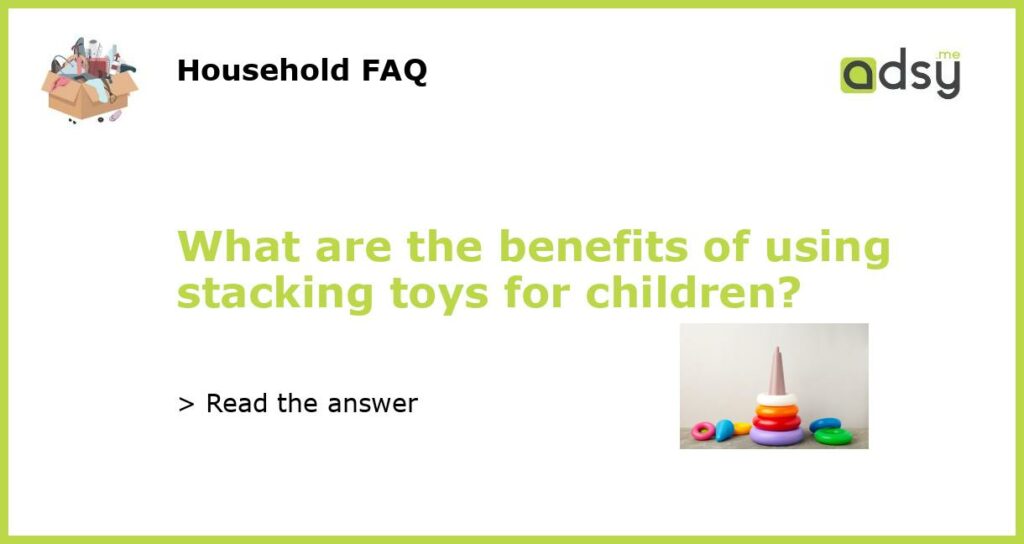Stacking Toys: Their Importance for Children’s Development
Stacking toys have long been recognized for their numerous benefits in promoting the overall development of children. These toys, typically consisting of a set of blocks or rings that can be stacked on top of each other, help children develop important skills such as cognitive abilities, fine motor skills, problem-solving skills, hand-eye coordination, and spatial awareness. Let’s explore the specific benefits of using stacking toys for children.
Enhancing Cognitive Abilities through Play
Stacking toys help children enhance their cognitive abilities by encouraging them to think and strategize while accomplishing the task of stacking the blocks or rings. Children need to make decisions about which pieces to use, how to balance them, and how to arrange them in a specific order. Through repeated practice and experimentation, children develop their logical thinking and problem-solving skills, setting a solid foundation for future academic success.
Fine Motor Skills Development
Manipulating and stacking objects demands control and coordination of fine motor skills. Children use their fingers and hands to grip, grasp, and manipulate the pieces while stacking them. This precise control of movements helps improve their finger dexterity and hand-eye coordination, which are essential skills for various daily activities such as writing, manipulating small objects, and using tools.
Fostering Creativity and Imagination
Stacking toys provide endless opportunities for children to use their imagination and creativity. By allowing kids to experiment with different shapes, colors, and patterns, these toys encourage them to come up with unique and innovative designs. Stacking toys also promote spatial awareness, as children need to understand how different pieces fit together and how they can be combined to create different structures.
Building Social and Emotional Skills
Playing with stacking toys can also contribute to the development of social and emotional skills in children. These toys often lend themselves to cooperative play, where children can engage in joint activities and collaborate with others to build complex structures. Through such interactions, they learn to communicate, share, take turns, and work together towards a common goal. This fosters important social skills and emotional intelligence, such as empathy, patience, and teamwork.






